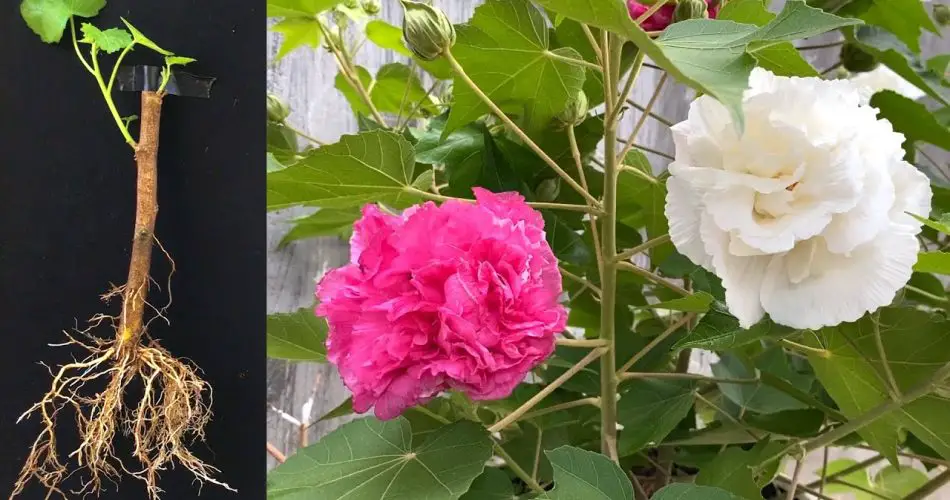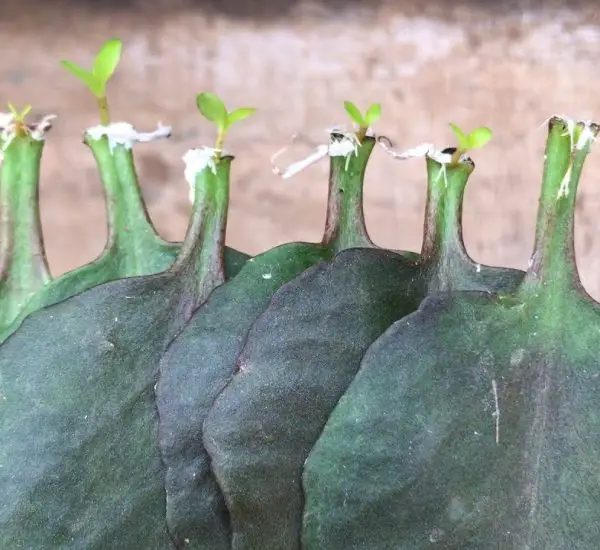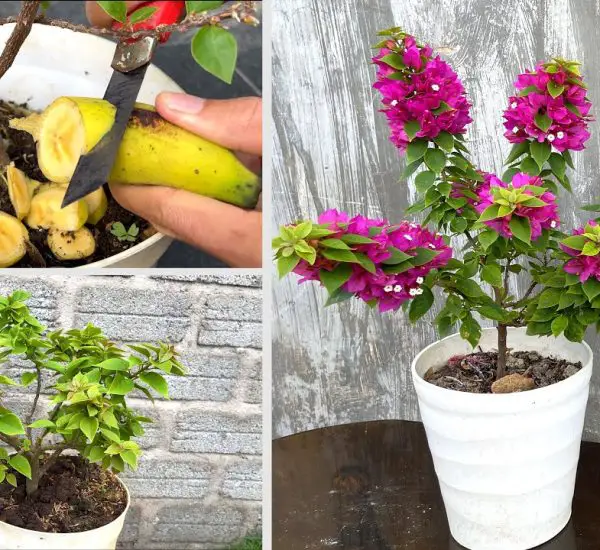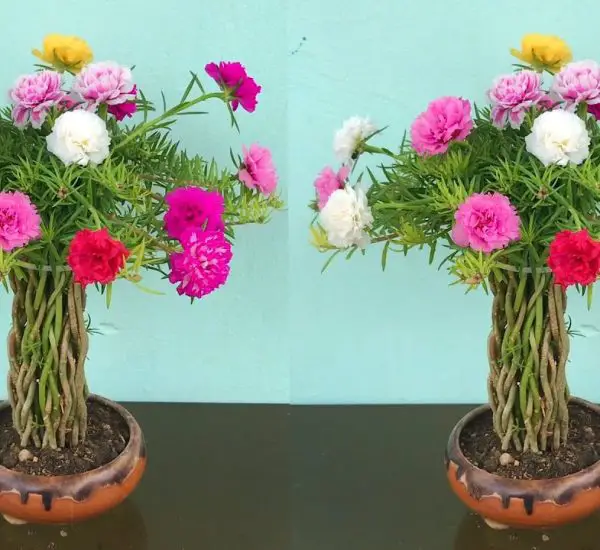Hibiscus mutabilis, commonly known as Confederate Rose, is a beautiful flowering shrub known for its large, showy blooms that transition from white to pink as they mature. If you’re looking to multiply your Confederate Roses or share them with friends and family, propagating by branches (or cuttings) is an easy and effective method. Here’s everything you need to know about propagating Hibiscus mutabilis through cuttings to create beautiful, vibrant plants!
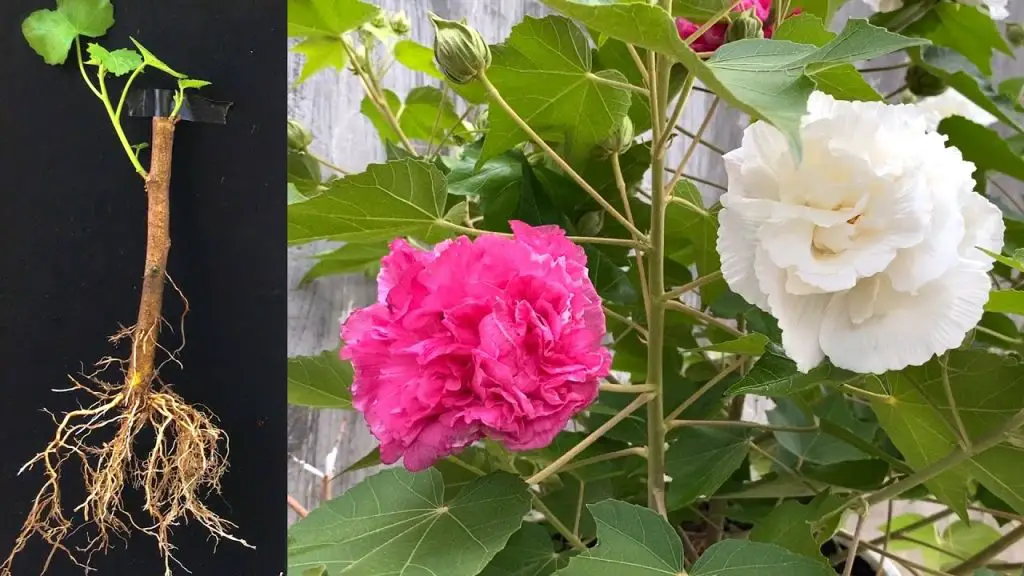
Why Propagate Hibiscus Mutabilis with Branches?
Hibiscus mutabilis is a popular plant due to its stunning flowers and fast growth. Propagating with branches or cuttings is a great way to:
- Grow More Plants: Propagation lets you multiply your Confederate Rose without buying new plants.
- Preserve Desired Traits: Cuttings will produce plants that are genetically identical to the parent, preserving the same flower colors and growth habits.
- Save Money: Growing plants from cuttings is an affordable and rewarding way to expand your garden.
How to Propagate Hibiscus Mutabilis (Confederate Rose) with Branches
Propagating Hibiscus mutabilis through cuttings is a relatively straightforward process that requires just a few simple steps. Here’s how to do it:
Step 1: Select a Healthy Parent Plant
Start by choosing a healthy Hibiscus mutabilis plant. Make sure it is free from pests and diseases, as you want to propagate strong, healthy plants. The ideal time to take cuttings is during the late spring or early summer when the plant is actively growing.
Step 2: Take the Cuttings
- Look for semi-hardwood stems that are not too old but have started to mature. These are typically the best for rooting.
- Using a sharp pruning shear or garden scissors, cut a 6 to 8-inch long stem from the parent plant. Make sure the cutting has at least two to three nodes (the points on the stem where leaves grow).
- Remove any leaves from the bottom of the cutting to prevent them from rotting in the soil.
Step 3: Prepare the Cuttings
- After taking the cutting, dip the cut end of the stem into rooting hormone (optional but recommended). Rooting hormones contain growth stimulants that help encourage faster root development.
- If you don’t have rooting hormone, you can still root the cutting naturally, though it might take a little longer.
Step 4: Plant the Cuttings
- Fill a small pot with a well-draining potting mix (such as a mix of perlite and peat moss). The soil should be loose and airy to promote good root growth.
- Make a hole in the center of the soil with a stick or your finger, then place the cutting into the hole, ensuring the cut end is buried at least 2 inches deep.
- Gently press the soil around the cutting to secure it in place.
Step 5: Water and Care for the Cutting
- Water the cutting gently to settle the soil around the roots, but do not overwater. Keep the soil slightly moist, not soggy.
- Place the pot in a bright, warm location with indirect sunlight. A humidity dome or plastic bag can be used to create a greenhouse effect and help maintain moisture levels.
- Keep the cutting in a spot that stays between 70°F to 80°F (21°C to 27°C) for optimal rooting conditions.
Step 6: Monitor Root Development
- After about 3 to 4 weeks, the cutting should start to develop roots. You can gently tug on the cutting to check if there’s resistance, indicating root growth.
- Once the roots are well-established, typically after 4 to 6 weeks, the cutting can be moved to a larger pot or directly into the garden.
Tips for Successful Hibiscus Mutabilis Propagation
- Ensure Good Drainage: Make sure the pot has drainage holes so that excess water does not sit in the soil, which can lead to root rot.
- Maintain Humidity: Keeping the cutting in a high-humidity environment is crucial for preventing dehydration while the roots are developing.
- Don’t Rush: Be patient! Rooting can take some time, so be sure to give the cutting enough time to establish roots before transplanting.
- Prune and Shape: Once the cutting has rooted and established, you can prune it to encourage a bushier growth habit and more flowers.
Common Problems When Propagating Hibiscus Mutabilis (Confederate Rose)
While propagating with branches is generally simple, there are a few common issues that can arise:
- Root Rot: Overwatering or using soil that retains too much moisture can lead to root rot. Always ensure good drainage and only water when the soil feels dry to the touch.
- Wilting: If the cutting wilts, it may not be getting enough humidity or water. Consider placing the pot in a humidity dome or misting the cutting regularly.
- Slow Rooting: Some cuttings may take longer to root, especially if they were taken during the colder months. Be patient and keep the cutting in a warm, humid spot.
Conclusion
Hibiscus mutabilis, or the Confederate Rose, is a beautiful plant that can be easily propagated through branch cuttings. By following these simple steps, you can multiply your plants, enhance your garden, and enjoy the stunning flowers that bloom from the Confederate Rose. With a little patience and care, you’ll soon have new plants thriving in your home or garden. Happy propagating!
